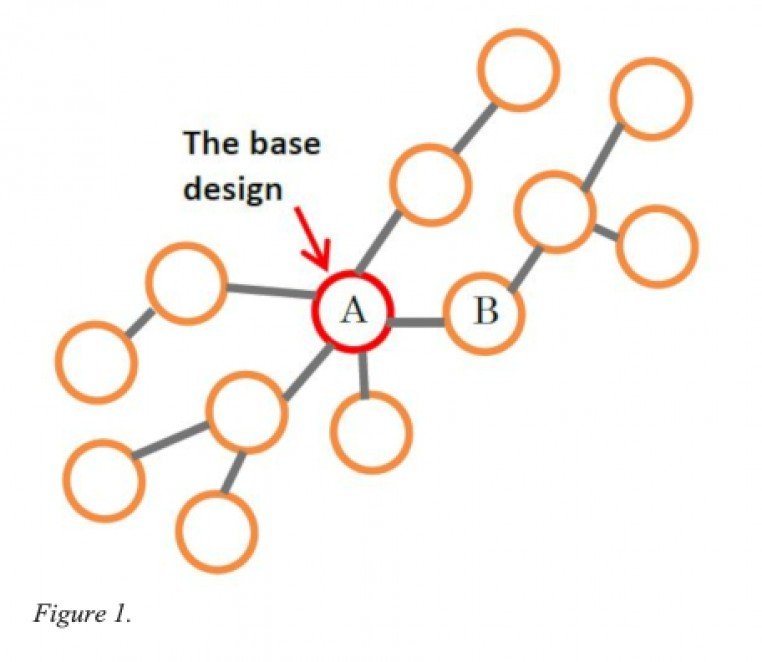Japan Design Act amendments: Network of associated designs
31 March 2020

Japan’s amended Design Act will come into force April 1, 2020. Under the amended act, Japanese design law will expand its protection of graphic imagines and interior and exterior architectural designs, as well as extending the term of protection to 25 years and accept multiple design filings.
“Under the amended act, you can associate designs with a base design or other associated design as in chain,” says Aki Ryuka, president of Ryuka IP in Tokyo. “Associated designs can be filed within 10 years from the filing date of the base design and last 25 years from the filing date of the base design. It will allow you to expand your protection while selling varieties of products.”

There is an exception to publicly known designs, Ryuka says. “If Design A (shown in Figure 1) is filed, publication or public sale of the same or similar Design X does not affect the registrability of associated Design B being later filed,” he says.
Ryuka talked Asia IP through potential problems which could arise under the amendments.
The first problem he terms the domino of rejection. “Associated designs are filed sequentially, starting with A as the base, then B, C and D. Right after each filing, the applicant sells products that represent the filed design.” (Figure 2.)

“If B is rejected because of a publicly known Design X, C is also rejected by the sales of B because C cannot be associated with rejected B and the exception discussed above does not apply,” he says. “Then, D is rejected by the sales of C because D cannot be associated with rejected C and the exception also does not apply. This is the domino of rejection),” Ryuka says.
A second potential problem is that a design similar to multiple unassociated designs that are publicly known cannot be registered. After unassociated Design A and B are registered and published, you would like to file Design X that is similar to both A and B (Figure 3).

A design can be associated with only one design, he says. “In addition, the exception only applies to the associated design group or their similar designs. Here, Design X is rejected even if X is associated with A, because the exception does not apply to the published Design B that is not associated with A.”
In order to protect designs completely, he suggests “to first file associated designs quickly without relying on the 10-year period. This is to avoid rejection based on other known designs and to avoid the domino of rejection. Filing associated designs together with the base design is recommended, if possible.”
Next, Ryuka advises filing an intermediate Design C when filing dissimilar Designs A and B to associate all designs,” he says. (Figure 4.)

“If A and B are in an associated group thanks to C, X can be registered because the exception applies to both A and B,” he says. “However, you cannot register C anymore once you file A and B.”
Last but not least, Ryuka advises filing intermediate Design C if the Japan Patent Office denies the association of design A and B, arguing the similarities. “This secures the registrabilty of Design X and expansion of the scope of protection in the future.”
Johnny Chan






